Hi!
You guys convinced me and I just got a bulk pack of 100 of these tubes before prices skyrocket because of all the hype 🙂
I never really used loctal sockets (these are loctal bases, right?) Anybody have a recommendation for some good loctal sockets or wants to swap some sockets for tubes?
Thomas
Thomas,
in opposition of others, I strongly suggest using teflon loctal socket from HAT (type B8G1, cat.no. 5935-99-056-1140).
For years I have been using this socket for C3g, C3m, 18040 etc...
I've never had a problem.
Only, tube pins must be perfectly prepared, no oxide, grease, dirt or that.
Some years ago in HAM festival I bought few dozens of NOS Siemens (thick plastic ones...bakelite?) C3m/C3g sockets.
These are better, than some new production ones. Tight pins, good contacts, but a bit dirty soldering pins (about half century old 🙂 ).
These are better, than some new production ones. Tight pins, good contacts, but a bit dirty soldering pins (about half century old 🙂 ).
Hi!
Never heard of HAT. Do you have a link? Couldn't find anything through google
Thomas
I strongly suggest using teflon loctal socket from HAT (type B8G1, cat.no. 5935-99-056-1140).
Never heard of HAT. Do you have a link? Couldn't find anything through google
Thomas
They look like this. Bought them many years ago from a forum member for my 7n7 loctal tubes. I've never seen them on ebay or in some store.
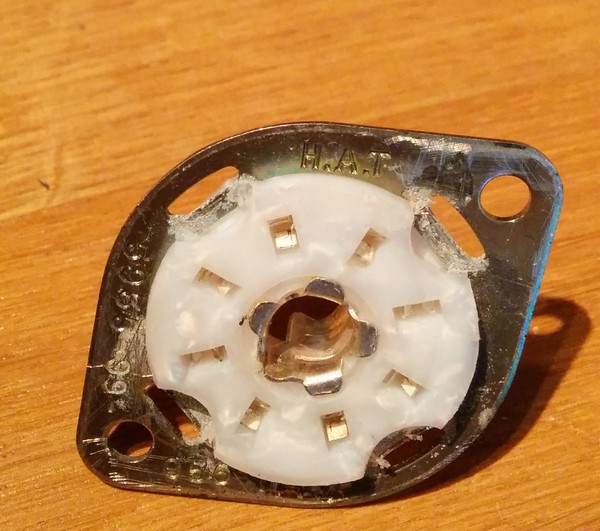
Perhaps they are these? https://web211.secure-secure.co.uk/tube-and-valve-electronics.co.uk/wholesale/product.asp?ID=2911 Not sure since there is no picture. But these are NOS and Western European made:
Perhaps they are these? https://web211.secure-secure.co.uk/tube-and-valve-electronics.co.uk/wholesale/product.asp?ID=2911 Not sure since there is no picture. But these are NOS and Western European made:
Attachments
Last edited:
Hi Thomas,Hi!
You guys convinced me and I just got a bulk pack of 100 of these tubes before prices skyrocket because of all the hype 🙂
I never really used loctal sockets (these are loctal bases, right?) Anybody have a recommendation for some good loctal sockets or wants to swap some sockets for tubes?
Thomas
Gstubes.com have good quality sockets. Silver plated contacts, old russian stock.
Best,
Radu
I have some of those H.A.T sockets, not entirely thrilled with them - the center on a couple of them pulled entirely out the first time I pulled a Sylvania 7N7 out of them.
I have a small quantity of 4P1L, one of these days I'll have to do something with them.. 😀
I have a small quantity of 4P1L, one of these days I'll have to do something with them.. 😀
I have some of those H.A.T sockets, not entirely thrilled with them - the center on a couple of them pulled entirely out the first time I pulled a Sylvania 7N7 out of them.
Yep. I was told by the seller to open them up (the center) with little pliers otherwise they are almost impossible to pull out.
Verstuurd vanaf mijn Nexus 5 met Tapatalk
The best loctal ceramic sockets are the Russian NOS ones:
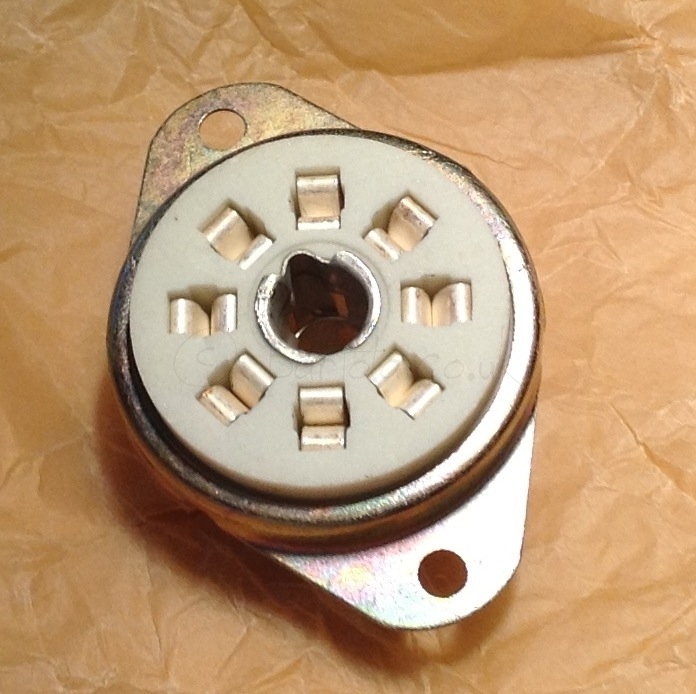
I think some Russian sellers still offer them.
Ale

I think some Russian sellers still offer them.
Ale
4P1L suppliers
As a caution regarding purchasing these tubes, I have bought 4P1Ls from suppliers on eBay that turned out to sound wonderful and were clearly new (wrapped in corrugated cardboard and outer paper) and ones that were also advertised on eBay without wrapping and received without any such wrapping that were sold as NOS, but sounded much different -- and not better, mind you! Of these non-wrapped tubes, only one appeared lightly used by comparison to the cardboard/paper wrapped tubes. That was judged by the absence of mirroring on the glass at the location where the grids are normally visible. Ones that were mirrored in this position sounded bad -- harsh and 2-dimensional. My conclusion is that these tubes were well-used, which is confirmed by the fact that the aluminum bases were dented in places and not silvery, but tarnished.
As a caution regarding purchasing these tubes, I have bought 4P1Ls from suppliers on eBay that turned out to sound wonderful and were clearly new (wrapped in corrugated cardboard and outer paper) and ones that were also advertised on eBay without wrapping and received without any such wrapping that were sold as NOS, but sounded much different -- and not better, mind you! Of these non-wrapped tubes, only one appeared lightly used by comparison to the cardboard/paper wrapped tubes. That was judged by the absence of mirroring on the glass at the location where the grids are normally visible. Ones that were mirrored in this position sounded bad -- harsh and 2-dimensional. My conclusion is that these tubes were well-used, which is confirmed by the fact that the aluminum bases were dented in places and not silvery, but tarnished.
4P1L suppliers cont.
I have attached a photo illustrating the differences I observed between good sounding tubes and apparently used tubes that didn't sound good. The tube on the right was removed from the cardboard/paper wrapping and photographed with one (on the left) that was received without the factory wrapping that sounded bad by comparison. The two tubes are presented with the same orientation with regard to their internal elements. The outer grid post is clearly visible with tube on the right, but the grid post is obscured from view by silvering with the tube on the left. Although it's not so apparent with these tubes and my mediocre photo (no sun today 🙁), the tube on the left has a somewhat tarnished base and pins.
I assumed that since all of these tubes had plenty of getter silver on the inside of the glass envelope that they were all "good", but that proved to be a bad assumption. Buyer beware!
BTW, I'm looking forward to one of Thomas Mayer's great tube deconstruction photo sequences of this tube.
I have attached a photo illustrating the differences I observed between good sounding tubes and apparently used tubes that didn't sound good. The tube on the right was removed from the cardboard/paper wrapping and photographed with one (on the left) that was received without the factory wrapping that sounded bad by comparison. The two tubes are presented with the same orientation with regard to their internal elements. The outer grid post is clearly visible with tube on the right, but the grid post is obscured from view by silvering with the tube on the left. Although it's not so apparent with these tubes and my mediocre photo (no sun today 🙁), the tube on the left has a somewhat tarnished base and pins.
I assumed that since all of these tubes had plenty of getter silver on the inside of the glass envelope that they were all "good", but that proved to be a bad assumption. Buyer beware!
BTW, I'm looking forward to one of Thomas Mayer's great tube deconstruction photo sequences of this tube.
Attachments
Thanks for posting these. Mine don't look like either of these. You can't see any insides on mine as the whole inside is coated with getter material.
Pics of sockets and tubes.
Because I bought like matched pair I tested to be sure and measured:
One tube
B+ 197,1 V
Grid -18,2 V
20mA
Other tube
B+ 197,9 V
Grid 18,8 V
20mA
Hopes this helps.
Because I bought like matched pair I tested to be sure and measured:
One tube
B+ 197,1 V
Grid -18,2 V
20mA
Other tube
B+ 197,9 V
Grid 18,8 V
20mA
Hopes this helps.
Attachments
A year ago I have build the Siberian pre amp and I am very happy with it.
I have a pair LL1660/18ma interstage transformers form a old phonoamp project
in my stash😀
Will it be better with the LL1660 and what would be a good operating point ?🙄
Hi Martin,
4P1L is best run at least 20mA, however for low level signal as in a line-stage you can get away with the 18mA. Looking at the starved filament curves I'd suggest you try any of the two options:
(If=550mA)
1. Ia=18mA, Vak=130V, Vgk-8V or Rf=14 ohms
2. Ia=18mA, Vak=155V, Vgk-10V or Rf=18 ohms
Let us know how you get on.
Cheers,
Ale
- Home
- Amplifiers
- Tubes / Valves
- 4P1L DHT Line Stage
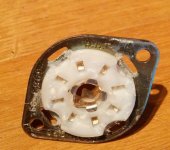

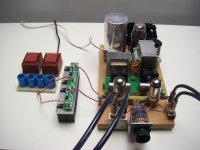
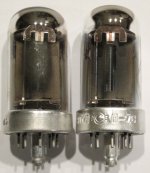
![WP_20140407_001[1].jpg](/community/data/attachments/363/363382-462a1b690499e24421fbf5210bf27242.jpg?hash=RiobaQSZ4k)
![WP_20140407_002[1].jpg](/community/data/attachments/363/363404-6deb9367aa76acc3faeca2d364be9831.jpg?hash=beuTZ6p2rM)
![WP_20140407_003[1].jpg](/community/data/attachments/363/363424-a44acfdda3c7ff1912dc5f27a2bd0ab6.jpg?hash=pErP3aPH_x)
![WP_20140407_004[1].jpg](/community/data/attachments/363/363442-92dfd5b6b0fd78d4aef8ccfca5efe810.jpg?hash=kt_VtrD9eN)
![WP_20140407_005[1].jpg](/community/data/attachments/363/363449-6365c2cb0f8471550720be5af6680902.jpg?hash=Y2XCyw-EcV)